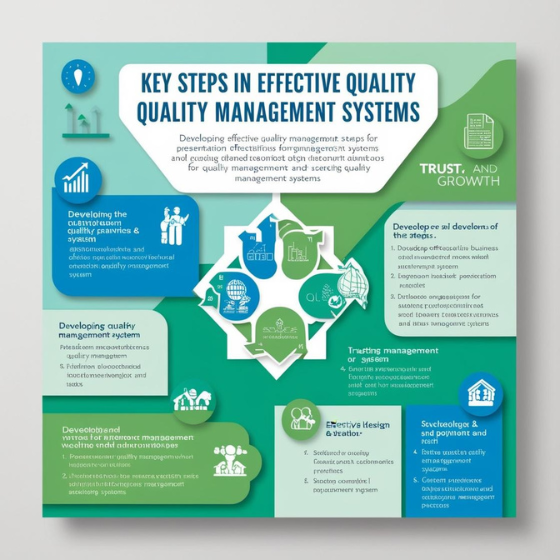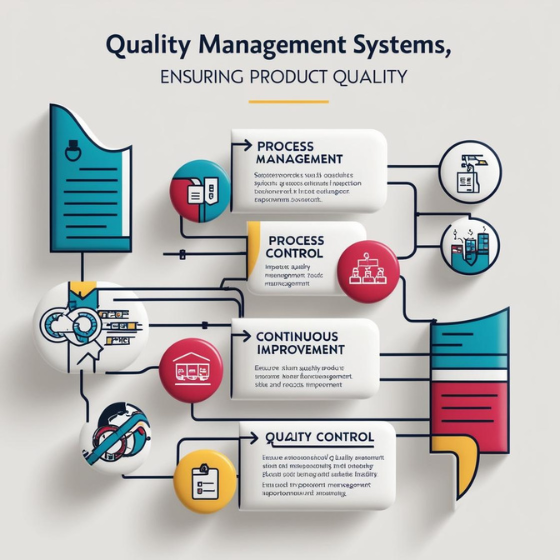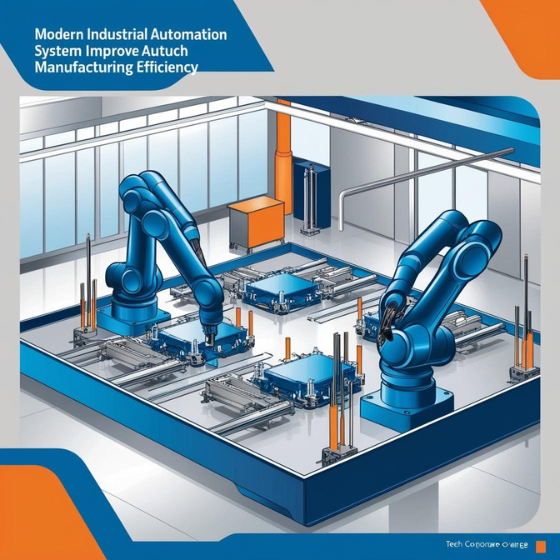How to Develop In-Vehicle Infotainment Systems
In-vehicle infotainment (IVI) systems are rapidly becoming a cornerstone of the modern driving experience. These systems integrate entertainment, navigation, communication, and connectivity, offering a seamless user experience for drivers and passengers alike. As demand grows for smarter, more intuitive technologies in vehicles, automakers and tech developers are focused on designing and developing advanced IVI systems that enhance the driving journey.
In this blog, we’ll explore how to develop in-vehicle infotainment systems, touching on key features, essential technologies, and best practices to create a user-friendly and safe infotainment experience.
What is In-Vehicle Infotainment (IVI)?
In-vehicle infotainment systems are multi-functional platforms embedded in modern vehicles, offering a wide range of services such as:
- Entertainment: Streaming music, movies, and games.
- Navigation: GPS-based navigation systems, real-time traffic, and route planning.
- Communication: Hands-free calls, text messaging, and voice commands.
- Connectivity: Integrating smartphones, Wi-Fi, and Internet-based services.
These systems are designed to enhance the driver’s experience, improve safety, and provide passengers with entertainment and convenience during their journey. With these core functionalities, IVI systems are now a critical feature in many vehicles, from entry-level cars to luxury models.
Key Features to Include in IVI Systems
When developing in-vehicle infotainment systems, it’s essential to focus on key features that align with both user expectations and vehicle requirements. The following features are fundamental in modern IVI systems:
1. Touchscreen Interface
A high-resolution, responsive touchscreen interface is a core element of most IVI systems. The touchscreen should be easy to navigate while driving, with clear, intuitive controls that reduce distractions. To enhance usability, it’s important to design the interface to be responsive and fluid, with large buttons, minimal on-screen clutter, and straightforward navigation.
2. Voice Recognition
Voice-controlled systems are a game-changer in reducing driver distraction. Integrating voice recognition technology allows drivers to perform tasks such as calling, adjusting the temperature, or selecting a route without taking their hands off the wheel. The system should understand natural language, so users can interact with it just like they would with a human assistant.
3. Smartphone Integration (Apple CarPlay & Android Auto)
One of the most critical aspects of IVI systems is their ability to seamlessly integrate with smartphones. Apple CarPlay and Android Auto allow drivers to mirror their mobile devices onto the vehicle’s infotainment screen, enabling easy access to apps like maps, music, and messaging. Ensuring that your IVI system supports these popular platforms will greatly enhance its usability and appeal.
4. Navigation and Real-Time Traffic Updates
Real-time navigation is crucial for IVI systems. GPS-based systems should provide turn-by-turn navigation, route optimization, and traffic updates. Advanced features like Augmented Reality (AR) navigation, which overlays directions onto the live camera feed, are gaining popularity. The integration of real-time data about road conditions and traffic patterns is key to enhancing the driver’s experience.
5. Entertainment Options
From music streaming to video content, infotainment systems must offer a range of entertainment options. Integrating services like Spotify, Apple Music, Netflix, and YouTube can keep passengers entertained, while drivers can enjoy their favorite music or podcasts during their journeys. Additionally, providing offline modes or the ability to download content ensures entertainment is available even without a stable internet connection.
6. Safety Features and Driver Assistance
To ensure that IVI systems enhance safety, integrating advanced driver-assistance systems (ADAS) is essential. Features like lane-keeping assistance, blind-spot detection, collision warnings, and adaptive cruise control can all work together to improve safety. Also, seamless integration with real-time traffic information allows the system to alert the driver of hazards, such as accidents or road closures.
Technologies Behind In-Vehicle Infotainment Systems
When developing IVI systems, understanding the underlying technologies that make these systems function effectively is critical. These are the primary technologies involved in creating a modern infotainment experience:
1. Embedded Systems
IVI systems are typically built on embedded systems, which are highly specialized, self-contained computing devices integrated into the vehicle’s hardware. These systems must be designed for durability, reliability, and low power consumption, as they need to function consistently over long periods without failure.
2. Connectivity and IoT
For IVI systems to interact with other devices and vehicles, strong connectivity is necessary. Bluetooth, Wi-Fi, and cellular networks (including 4G/5G) play a vital role in enabling seamless integration with smartphones, smart home devices, and other IoT-powered systems. IoT also allows the car to collect and transmit data to the cloud, enhancing functionality, diagnostics, and predictive maintenance.
3. Artificial Intelligence (AI) and Machine Learning
AI and machine learning technologies are transforming IVI systems. AI can improve voice recognition and assist in personalized user experiences by analyzing user behavior and preferences. For example, AI can optimize navigation routes by predicting traffic patterns or offer personalized content recommendations based on listening habits or search history.
4. Cloud Computing
Cloud computing is integral for modern IVI systems, enabling real-time updates and synchronization with various applications and services. Cloud-based services allow vehicles to receive software updates, new features, and patches over-the-air, improving the longevity of the infotainment system. Additionally, cloud services help manage data storage and provide backup for content like music and navigation maps.
5. User Interface (UI) and User Experience (UX) Design
UI/UX design plays a significant role in ensuring that IVI systems are intuitive and easy to use. A great user interface must minimize distractions and maximize usability, especially in high-pressure driving environments. A seamless, fluid design and well-organized layout are essential to creating an effective IVI system that improves the overall user experience.
Best Practices for Developing IVI Systems
Developing an effective and engaging IVI system requires a thoughtful approach. Here are some best practices to consider when building your in-vehicle infotainment system:
1. Prioritize Safety and Minimizing Driver Distractions
Safety should be a top priority in any IVI development. Focus on features that promote hands-free functionality, such as voice recognition and steering-wheel controls, so that drivers can interact with the system without taking their eyes off the road. Moreover, ensure that all on-screen controls are easily accessible and legible, with minimal distractions.
2. Focus on Seamless Integration
An effective IVI system should seamlessly integrate with the vehicle’s existing features, such as climate controls, vehicle diagnostics, and media systems. Ensure that third-party applications (e.g., Apple CarPlay, Android Auto) are well-integrated and easy to use. Ensuring your system is compatible with a wide range of devices will improve its appeal.
3. Ensure Compatibility with Multiple Platforms
When developing IVI systems, compatibility with a range of devices is essential. Ensuring that your system works well with popular smartphones, streaming services, and navigation apps will enhance its usability and attract more users. Regularly updating your system to support new technologies and platforms will also keep it competitive.
4. Make Updates and Maintenance Easy
One of the main advantages of modern IVI systems is the ability to perform over-the-air updates. This feature allows for new functionalities, bug fixes, and software patches to be pushed directly to the vehicle, ensuring the system remains up-to-date and secure. Simplify the update process for end-users and ensure minimal disruption.
5. Conduct Comprehensive Testing
Extensive testing is crucial for IVI systems, as they must function correctly in a variety of conditions and environments. Perform usability testing, road testing, and software compatibility checks to ensure the system operates smoothly. Additionally, testing for factors like connectivity performance and interaction with vehicle sensors will ensure the system’s reliability.
Conclusion
Developing an in-vehicle infotainment system requires a strategic blend of advanced technology, user-centered design, and a focus on safety and integration. By implementing the right features and best practices, you can create an infotainment system that enhances the driving experience while keeping the user engaged and connected.
At Sodio, we specialize in custom software development, offering advanced solutions for building cutting-edge IVI systems. Whether you need help integrating AI, optimizing UI/UX, or ensuring compatibility with new technologies, our expert team is ready to help. Contact us today to start developing your next-generation in-vehicle infotainment system.







